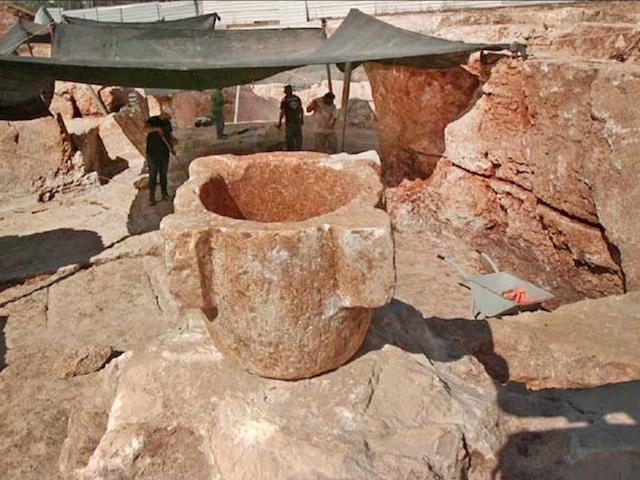The Israel Antiquities Authority (IAA) has announced a groundbreaking discovery in Jerusalem that promises to reshape our understanding of the ancient capital. A colossal quarry dating back to the Second Temple period has been unearthed in the city's Har Hotzvim industrial park, offering an unparalleled window into Jerusalem's storied past.
An Archaeological Marvel: Unveiling a Lost Era
Discovered just weeks ago, this quarry is one of the most significant ever found in Jerusalem. The site revealed two stone vessels, which, according to Jewish law, are impervious to ritual defilement. This discovery strongly indicates the presence of a Jewish population in the area during that time.
The excavation also uncovered an array of building stones of various sizes, alongside quarrying and cutting trenches. These trenches provide crucial insights into the size and scale of the blocks produced at the site.
Amazing!
— Daniel | דניאל 🇮🇱 (@DanitheSett) August 1, 2024
One of the largest quarry sites from the end of the 2nd Temple period was discovered on Mt Hotzvim in Jerusalem.
Stone vessels were discovered which, according to the Halacha, do not receive impurity, and characterize the Jewish population. https://t.co/R82Nfp5tUV
Giant Slabs for Royal Projects
"Most of the building stones extracted were huge rock slabs, measuring approximately 2.5 meters in length, 1.2 meters in width, and 40 centimeters in thickness," reported Michael Chernin and Lara Shilov, the IAA's excavation co-directors. "Each block weighed a staggering two and a half tons."
The sheer size of these stones suggests they were destined for Jerusalem's grand royal construction projects during the late Second Temple period, likely under the reign of King Herod the Great (37-4 BCE). "It is reasonable to assume, with due caution, that at least some of the building stones extracted here were intended to be used as pavement slabs for Jerusalem’s streets in that period," the directors added.
King Herod's Architectural Legacy
King Herod's reign was marked by ambitious construction projects, most notably the expansion of the Temple Mount area and the Temple itself. His era also saw the rise of magnificent public buildings, palaces, and fortifications throughout Jerusalem, all requiring a vast supply of high-quality stones from quarries like this newly discovered one.
A large quarry for building stones, dated to the Early Roman period, has been unearthed at Har Hotzvim, near ancient Jerusalem.
— Yonatan Adler (@AdlerYonatan) August 1, 2024
Pictured is a lone stone vessel found at the site. The stone here is too hard for mass production of stone vessels...
1/2https://t.co/AJKXdbySUI
A Timely Discovery with Deep Symbolism
The timing of this discovery is poignant. As IAA Director Eli Escusido noted, "Revealing this huge quarry just before the time of year when Jewish people worldwide mourn the Jerusalem that was lost in these days is symbolic and very moving." The Second Temple, a focal point of Jewish worship and heritage, was tragically destroyed by the Romans in 70 CE.
But we have no connections to Jerusalem......sure......
— Avraham Israeli Zionist 🇮🇱🇨🇦 (@IsraeliAvraham) August 1, 2024
A huge Second Temple period quarry, one of the largest ever found in Jerusalem, is uncovered during an excavation in the Har Hotzvim industrial area.https://t.co/LKBhL8aFZG
A Public Display of Heritage
The stone vessels uncovered at the site will be displayed this summer in Jerusalem, allowing the public to connect with a tangible piece of their ancient heritage. This monumental discovery not only enriches our understanding of Jerusalem's history but also serves as a powerful reminder of the enduring legacy of the Jewish people in their ancient capital.
This extraordinary find underscores the profound historical significance of Jerusalem and its pivotal role in Jewish history. The unveiling of this massive quarry provides a vivid and awe-inspiring glimpse into the city's glorious and tumultuous past, further cementing its place as a cornerstone of Jewish heritage.


